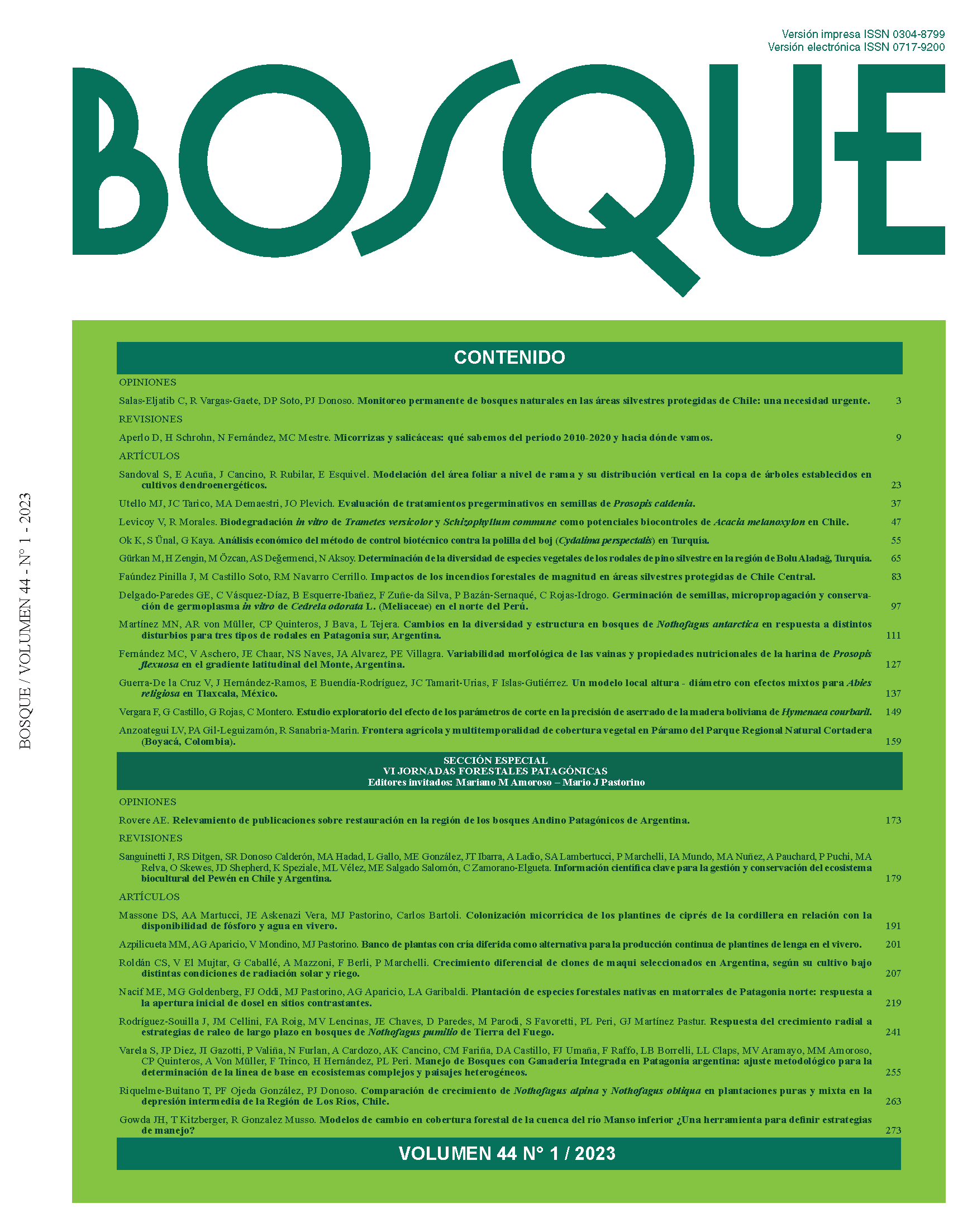Main Article Content
May 22, 2023
Abstract
The sawing of Hymenaea courbaril is complex due to its high density and abrasiveness. These factors accelerate the wear on saw blade teeth, and as a consequence, increase the cutting variability and process costs. The effect of cutting parameters on standard deviation of sawn-wood thickness was evaluated to propose optimal sawing conditions. A log carriage bandsaw with two saw blade geometries, three log diameter classes, and two feed rates were used to carry out the sawing tests. The results showed that the sawing variation expressed by the total standard deviation of board thickness was lower than 1 mm, when log diameter was lower than 0.79 m, and the log carriage feed rate was lower than or equal to 10 m min-1 for both saw geometries. The sawing thickness was affected by log diameter and log carriage feed rate, while saw geometry was not statistically significant. However, the goal of this initiative was not an estimation of the changes on sawmill productivity. Before this study, all log classes were processed with a log carriage feed rate of no higher than 10 m min-1. Consequently, given the estimated total standard deviations, it can be suggested that the logs of class 2 could be sawn at a 50 % higher rate without altering the cutting precision, improving sawmill productivity.


